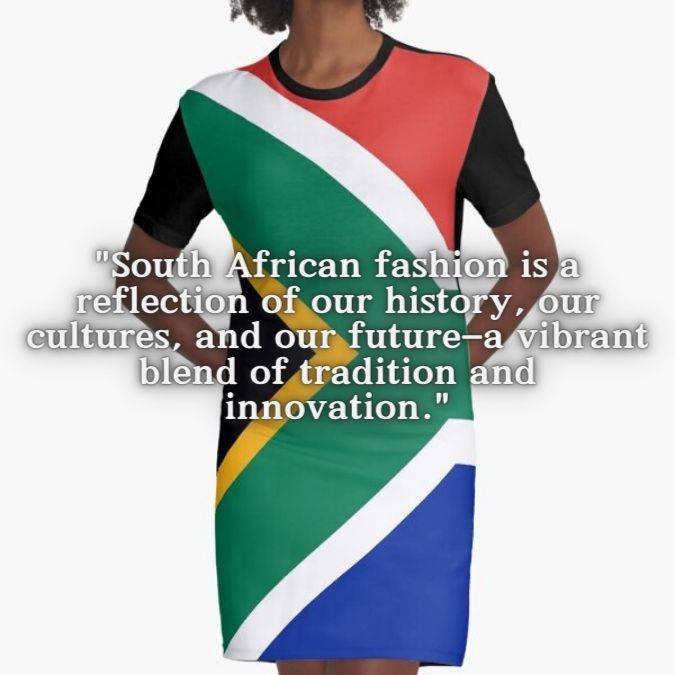
“Modern Style Meets Cultural Roots: The Influence of South African Fashion”
South African fashion is a rich tapestry woven from diverse cultural influences, historical legacies, and an ever-evolving modern aesthetic. Over the years, the country’s fashion scene has transformed dramatically, evolving from traditional garments to globally recognized, trendsetting designs. In this exploration of South African fashion, we’ll trace its evolution, highlighting key milestones, influences, and the rising designers shaping the future of fashion in the region.
1. Traditional Fashion and Cultural Heritage
South Africa’s fashion history is deeply rooted in the traditions of its diverse ethnic groups, including the Zulu, Xhosa, Sotho, Tswana, and Venda, among others. Each group has its own distinctive style of dress, often using vibrant colors, intricate beadwork, and woven fabrics to signify social status, age, or ceremonial role.
For example, the Xhosa people are known for their colorful, bead-laden attire, especially during rites of passage like initiation and weddings. Zulu attire, often seen in the form of animal hides, feathers, and beadwork, carries a sense of power and pride, with each element symbolizing something important about the wearer’s social standing or personal history. The Ndebele people, known for their intricate geometric patterns and brightly painted houses, apply the same sense of design to their clothing, creating bold, graphic patterns with beads and fabric.
These traditional garments weren’t just clothes; they were a powerful expression of identity, community, and history. Despite the significant impact of colonialism and the erosion of indigenous culture under apartheid, traditional fashion remained an essential part of South African life, influencing the designs that emerged in the 20th and 21st centuries.
2. Colonial Influence and the Birth of South African Couture
With the arrival of European settlers in the 17th century, traditional South African attire began to interact with European styles. The clothing of the Dutch, British, and Portuguese settlers began to mix with indigenous garments, creating a fusion of styles and a slowly developing local couture tradition. During the colonial era, the rich textiles from Europe, such as wool, cotton, and silk, were introduced to South African markets, influencing local fashion.
As South Africa moved into the 20th century, the first signs of modern fashion began to emerge. In urban areas like Cape Town and Johannesburg, white South Africans and wealthy black South Africans started adopting Western styles, while still incorporating elements of African culture. This period marked the beginning of South Africa’s own fashion designers starting to explore tailoring and design innovation. However, apartheid, which segregated the country along racial lines from 1948 until the early 1990s, stifled the free exchange of fashion and creativity. Black South Africans, in particular, faced extreme limitations in terms of access to high-end fashion, education in design, and the ability to participate in the global fashion market.
3. The Rise of Political Fashion and Statement Pieces
During the apartheid era, fashion became an important form of resistance. South Africans used clothing to make political statements, express defiance, and assert their cultural identity. One of the most iconic symbols of this period was the madiba shirt, a colorful, loose-fitting shirt worn by Nelson Mandela, which became a symbol of freedom and hope in the fight against apartheid. Mandela’s distinctive style, along with the traditional African garments worn by other political leaders, represented a conscious reclaiming of African identity in opposition to the Western colonial influence.
In the 1980s and 1990s, street fashion emerged in South Africa’s townships, influenced by global trends like hip hop, punk, and reggae, but adapted with a local twist. The influence of African music, such as kwaito and jazz, had a profound effect on fashion, creating a fusion of urban and traditional aesthetics. Bright colors, graphic prints, and statement accessories began to define youth culture in the country, offering an alternative to the more conservative Western fashion.
4. Post-Apartheid: Embracing Diversity and Innovation
With the end of apartheid in 1994, South Africa entered a new era, and its fashion scene experienced a renaissance. As the country became more integrated into the global community, there was a surge of interest in both African and South African designers, who sought to create work that represented the country’s diverse cultural landscape while engaging with global trends.
A key moment in the modern South African fashion movement came in the late 1990s with the establishment of South African Fashion Week (SAFW). This annual event gave designers a platform to showcase their work to an international audience, and many South African designers began to gain recognition beyond the borders of the country. For instance, Stella Jean, although Haitian-Italian, created a fusion of African textiles and European design, which attracted attention from South African designers looking to incorporate African fabrics and textures into modern, high-end fashion.
During this time, designers such as Gert-Johan Coetzee, David Tlale, and Loxion Kulcha began to stand out. Coetzee, for example, became known for his elegant, red-carpet ready creations, combining European tailoring with African-inspired fabrics. Tlale, on the other hand, was celebrated for his bold, dramatic looks and his use of African prints and textures. Designers like Thula Sindi and Catherine Ruvez brought a touch of European chic to their collections while always incorporating South Africa’s rich textile heritage.
The post-apartheid period also saw a shift toward sustainability in South African fashion, as designers became increasingly aware of the need to embrace eco-friendly practices. Ethical fashion, which emphasizes fair wages and environmentally sustainable production, became a growing trend, with designers using locally sourced fabrics, upcycling materials, and promoting slow fashion.
5. South African Fashion on the Global Stage
Today, South African fashion is recognized internationally for its innovation, artistry, and cultural richness. South African designers regularly showcase their collections at major international fashion weeks, including London Fashion Week and New York Fashion Week. Moreover, local designers are gaining global recognition for their ability to blend traditional craftsmanship with modern, cutting-edge techniques.
In addition to individual designers, brands such as Maxhosa by Laduma have become synonymous with South African fashion. Laduma Ngxokolo’s Maxhosa brand celebrates the Xhosa heritage through intricate knitwear designs that incorporate traditional motifs and colors. The brand has become globally recognized, with pieces showcased in fashion capitals like Paris, New York, and London.
Another standout in the international fashion arena is Pichulik, a jewelry brand founded by designer Katherine-Mary Pichulik. The brand’s bold, statement pieces draw inspiration from African heritage, combining intricate beadwork with modern design. Pichulik’s success highlights the increasing demand for fashion that blends cultural influences with contemporary aesthetics.
6. Conclusion: South Africa as a Trendsetter
South African fashion has come a long way since its traditional roots, growing into a globally recognized scene that celebrates creativity, innovation, and diversity. Today, South African designers continue to push boundaries, embracing both their cultural heritage and the global fashion conversation. Whether it’s through the colorful garments of traditional cultures or the cutting-edge designs of contemporary fashion houses, South Africa’s influence on the global fashion industry is undeniable. With a unique blend of history, culture, and style, South African fashion has firmly established itself as a trendsetter in the global fashion landscape.















